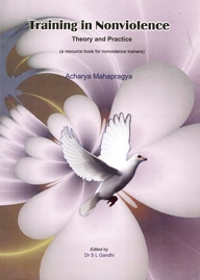Three kinds of distinctions rooted in caste, skin color, and creed prevail in our society today. These three distinctions have divided humanity into various groups. The divisions are so deep and wide that the philosophical line of amity is not as distinct and clear as the philosophy of hatred. This philosophy of hatred has almost distorted natural co-existence. Today we have to make a great effort to explain the message of world peace or world friendship but we do not need to explain hatred and unrest.
One person is a citizen of India while the other is a Pak citizen. This distinction of nationality has created a wall between them. An Indian shows greater attachment to the land of India than to a Pak citizen. In reality man is closer to man than to land but in practice it is not so. As a matter of fact man is more attached to material objects than to members of his own race. He is more attached to the beliefs of caste, color and creed than that of humanity. The distance between the real truth and its social practice is really a very complex problem.
In philosophy three kinds of antagonism or opposition have been pointed out. They are – pratibadhya (that which obstructs is to be killed), pratibandhak vadhya (that which is obstructing is to be killed) and vadhak aur sahanvasthan (antagonism towards co-existing race i.e. the hunter). The bulb was radiating the rays of light. In the meanwhile someone switched it off. The light changed into darkness. This is the opposition of the obstructing caste. The second type of opposition is what we see between a snake and a mongoose; that which is to be hunted and the hunter. Water and fire cannot co-exist hence the opposition that exists between them is of the non-co-existential quality.
In a situation of diversity and opposition, we cannot think of co-existence. The philosophy of anekant (doctrine of non-absolutism) has found a solution. On the foundation of this solution ahimsa was established. In anekant lies an excellent way to reconcile the opposition. It has a maxim: there is nothing like absolute opposition and absolute harmony.
The doctrine of absolute diversity and absolute unity is not true. Where opposition is manifest unity is concealed beneath. Similarly there lies unity in diversity and diversity in unity. When we see only diversity and opposition, violence becomes strong. If we see only unity and harmony then also our concept of utility is broken and social interaction is adversely affected. The solution of the problem of violence lies in experiencing relativity between diversity and unity and harmony in opposition. To establish reconciliation between the two is a solution to the problem of violence. On this basis we can implement the principle of coexistence.
 Acharya Mahaprajna
Acharya Mahaprajna

